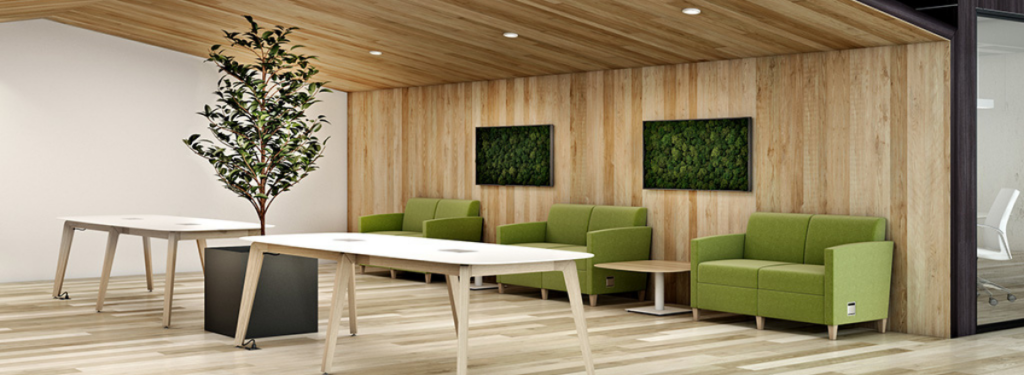It’s May! Did you know it’s also Mental Health Awareness Month?
It’s exciting to see more and more employers embracing their role in supporting the health and wellness of their employees. I think everyone can agree that work/life balance is no longer a trendy buzzword or a “nice to have.” We have reached a tipping point.
Companies that invest in the overall well-being of their team members will thrive, while those that don’t are destined to be plagued with low company morale, high turnover rates, poor performance and decreasing profits.
There are two crucial elements for employers to consider when thinking about how to best support mental health in the workplace.
The first is policy.
If you don’t have leadership who believes in the company’s obligation to foster mental health or the company culture to support it, you’re dead in the water.
Seriously, if you don’t have the organizational structure in place, start there. Otherwise, if you incorporate the design elements below, and your people don’t feel comfortable using them, you’ll have wasted time and money.
The second element supporting mental health is intentional design. Strategic design built around your corporate mental health policies creates spaces that strengthen resiliency and bolsters mood, morale, productivity and satisfaction.
If you’re unsure where to start, read on for some basic elements that can quickly incorporate into any office space.
Connection to Nature
The relationship between improved mental health and nature is nothing new. Time and again, studies have shown that biophilic design and regular exposure to nature can reduce stress and anxiety, improve well-being, spark creativity and boost productivity.
Greenery, organic textures and other natural elements are easy to incorporate into any design.
Plants are probably the absolute easiest. Add potted plants to common areas, breakrooms, meeting rooms and anywhere else you see fit. You can even retrofit small planters onto your workstation panels in an open office environment. Look for low maintenance options to keep it simple. This post from DenGarden lists eight varieties ideally suited for the office.
If you want something more artistic than the potted plant, framed moss artwork is a great way to turn nature into art. Are you looking for something even more dramatic? Take a bare wall and turn it into a plant or moss wall. The result is equal parts stunning and soothing.
Connection to Place
People want to feel a sense of belonging and connection to each other and the places that shape us. By creating an atmosphere of community and togetherness, you’re offering a safe, supportive environment that places great value on your employees’ mental and emotional well-being.
Some great places to start are examples taken from the WELL Building Standard. Celebrate your employees’ culture, workplace and the surrounding community by incorporating artwork from local artists and native or unique materials.
A fantastic example I’ve recently seen is an old Hostess facility converted into multi-use space. In one of the common areas, original Twinkie bake tins are serving as wall tile. It’s a remarkable story, and it serves as an incredible design. It also hits the WELL Standard of inspiring human delight, an essential part of supporting well-being.
Restorative Opportunities
Let’s talk about naps. No, I’m not kidding. Did you know a quick, 20-minute nap can lead to improved cognitive function, less stress, more patience, more efficiency and better overall health?
If you want to give your people more bang for their mental buck, consider creating a space where people can reap the benefits of the power nap.
There are such things as nap pods, but if you don’t have the budget for those (they can run between $8,000-$15,000), you can easily convert an office or a meeting room into a restoration room.
All you need is a quiet space and a mat, bench, sofa or reclining chair — along with an office policy that supports a little shut-eye.
Still not entirely sure this is a real thing? According to Sleep.org, progressive companies such as Ben & Jerry’s, Cisco, Huffington Post and Zappos have embraced the power of the nap and encourage their employees to take advantage of the many benefits.
Dedicated Space
If you can only do one thing, make it this one. Find a space within your office where the only acceptable use is rejuvenating and refreshing. Aim to make it as flexible as possible so your team can realize a wide variety of benefits while offering the ability for individuals to tailor the space to their specific needs. Some things to keep in mind:
- Fill the space with natural elements, calming colors, textures and materials.
- Install dimmable lighting so occupants can adjust to their liking.
- Provide moveable chairs, cushions or mats to accommodate different uses such as meditation, yoga and napping. (I’m making this happen people!)
- Offer therapeutic sound options like meditative melodies or sounds of nature.
- Build from the previous examples above by installing artwork and greenery.
- Make the space private.
Continued Efforts
Mental health is a team effort. As business owners and community leaders, we must strive to further conversations around mental health and support the health and wellness of our employees. Not only will our companies be more vital, but our communities will thrive as well.

Courtnay Bradley, WELL AP, is founder and chief purpose officer at Trilogie and host of The Up/Down Podcast and Trilogie’s Table Talk live stream series. Her passion for people fuels her obsession with helping companies design and furnish work environments that truly inspire and engage employees. In 2009 she started Trilogie with the sole purpose of creating kick-ass workspaces that help organizations thrive.


